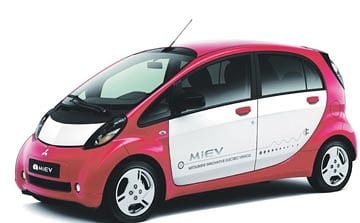Making the best use of Mitsubishi’s advanced midship architecture, the i-MiEV is powered by a compact and lightweight motor and a pack of high-energy density lithium-ion batteries located within a long 2,55m wheelbase.
Recently launched in 15 European countries including Ireland, the i-MiEV has already surpassed Mitsubishi’s sales expectations with 3,000 units shipped to the end of January 2011, and currently occupies the No. 1 sales spot in the A-Segment in Norway.
Further positive news for Mitsubishi vehicles in the latest round of EURO NCAP testing was delivered when the Mitsubishi ASX crossover secured a coveted five star rating.
The high level of built-in passive safety that helped to secure this rating is achieved through a very comprehensive safety package, which includes:
* High-tensile steel to reduce weight and increase stiffness.
* Shape optimisation of the octagonal-section straight front side members for better energy absorption.
* “Triple-leg” bearing structure, linking the rear end of the front side member with the dash cross centre and lower members, to efficiently disperse frontal impact energy.
* Reinforced body construction, which helps to absorb crash energy.
All of these measures compliment Mitsubishi’s RISE (Reinforced Impact Safety Evolution) uni-body, which brings dramatic advances in multi-directional impact safety performance.
As a fundamental starting point, this proprietary design disperses energy loads during side and rear impacts and controls distortion, enhancing occupant protection and also helping to protect the fuel system during a rear impact.
The internal structure of the front bumper is designed to provide an energy-absorbing zone, while the placement of appropriate material and a lower bumper beam reduces pedestrian leg injury.
Refer to main dealers Adam of Glin and Castle Park Motors at Limerick’s Dock Road.
For optimum pedestrian protection, the front bumper, bonnet, fenders and cowling all employ impact energy absorbing structures. These elements provide an effective crumpling zone without affecting the strength or flexibility of the body.



